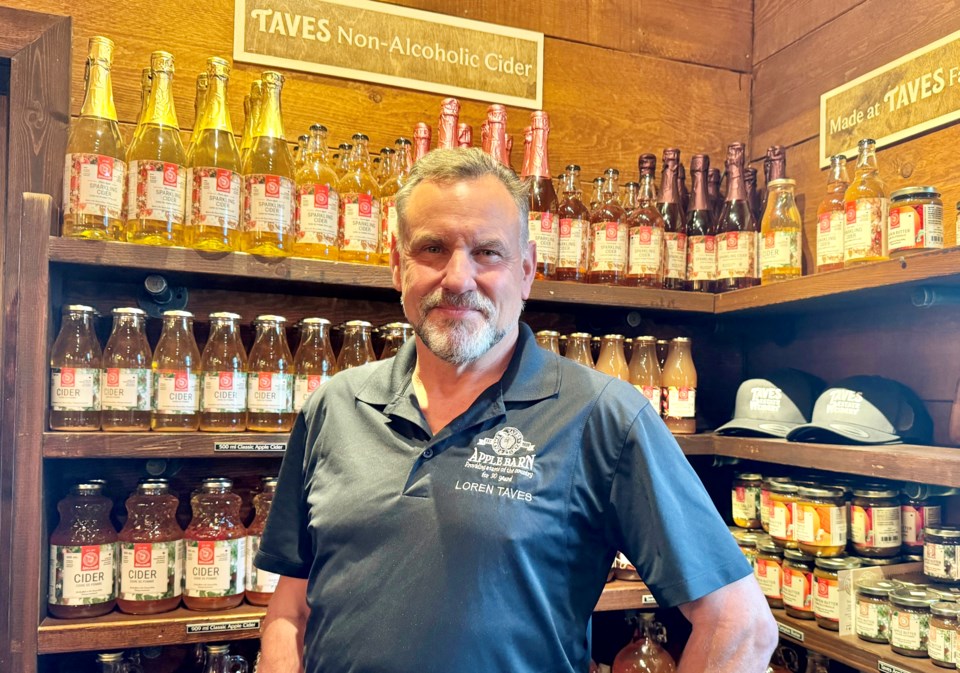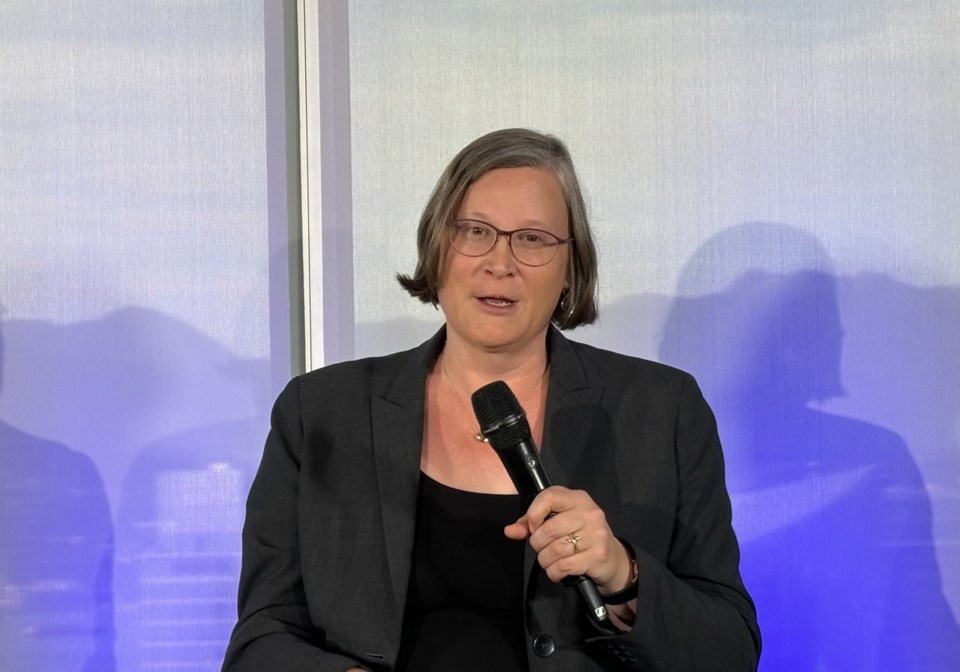Calls are growing louder for the B.C. government to change regulations to allow more food manufacturing on the Agricultural Land Reserve (ALR).
Mayors, business owners, academics and community advocates are voices in a chorus of people who want to make it easier for B.C. farmers to manufacture food products on ALR land.
Some, however, oppose having more manufacturing on ALR land because they say farmland should be considered sacred, and any loss of farmland risks B.C. residents’ food security.
The provincial government has been slow to make any ALR regulatory changes while it embarks on a strategy that "
Essentially that means that the province works with local governments to identify specific areas in the ALR where industrial-scale processing can take place, and then it allows that manufacturing when the processed products are primarily from agricultural output.
Food manufacturers often see lower profit margins than do other manufacturers, which makes it tougher for them to compete against Amazon.com Inc. (Nasdaq:AMZN) and other large companies when bidding for space on industrial-zoned land.
That competition, along with strict limitations on farmers’ ability to manufacture prepared foods or to produce packaging and other ancillary products on ALR land, pushes that production far from where the food is grown.
That in turn increases food costs for consumers, Richberry Group principal and Ocean Spray chair Peter Dhillon told BIV.

“We’re losing processors,” Dhillon said. “They’re going to other jurisdictions for whatever the reasons are. And if you’re trucking food 1,000 or 2,000 miles away to have it finished, and then you’re trucking it back—one, it’s bad for the environment, but two, it’s going to be a lot more costly, and that’s what we’re doing.”
Dhillon said that B.C. Minister of Agriculture and Food Pam Alexis should change provincial regulations to lower or eliminate what farmers often call the 50-per-cent rule.
That rule holds that half of all the input fruit farmers use when making non-alcoholic products such as jam or juice on their ALR land must come from their own land. The same 50-per-cent rule for inputs applies to dairy operators who make cheese on ALR land, and it is the Agricultural Land Commission (ALC) that oversees these regulations.
Alexis declined BIV’s request for an interview but her ministry sent a statement to say the rationale in having this regulation is “to ensure that some level of primary agricultural production is taking place on ALR land used for processing.”
The ministry added that farmers may apply to the ALC for exemptions, and that about 90 per cent of applications are approved.
That is not enough for Dhillon.
“It’s a ridiculous rule that has killed processing [in B.C.]” he said.
Taves Family Farms owner Loren Taves agreed.
He told BIV that he wants the province to loosen rules governing food manufacturing on ALR land.
He makes apple juice and non-alcoholic cider on his farm and is only allowed to buy 50 per cent of the input fruit for those products from other farmers, even if they are from B.C.
The rest of the fruit Taves uses must come from his farm.
Were he able to use more fruit from other farmers, he could make more juice and get better use out of the expensive equipment he uses to make it, he said.

Rules for wineries and alcohol-based cideries can be complicated and they depend on whether the businesses are classed as “commercial” or “land based.”
Commercial wineries can make wine from imported grapes but, if they are on the ALR, they must conform to ALC rules that say that 50 per cent of the input fruit must come from grapes grown in B.C.
Land-based wineries operate under different rules, which say all grapes must be from B.C., including 25 per cent from the winery’s estate.
Food processing fraught with politics
BC United agriculture critic Ian Paton told BIV that he is onside with changing the 50-per-cent rule so farmers can be more efficient with food-processing operations.
“By all means, let’s get on with it,” he said.
Paton said he has visited the potato-growing region of Washington state, where he said that, amid miles and miles of potato fields, is a large manufacturing facility that makes French fries and other potato products.
“I’m thinking that’s a pretty smart place to put [manufacturing]: Right where the potatoes are,” he said.
BC Conservative leader John Rustad did not respond to multiple requests from BIV for an interview, but he discussed the need to increase food production and make production more efficient at a June 20 Greater 91原创 Board of Trade event.
“We need to double our food production but we’re the highest cost producers of food in Canada, so we have to drive down that cost,” Rustad said. “We have to look at every component that goes into food production to drive down the cost so that we can look at doubling [food production]. We have to expand out using things like vertical farming.”
BC Greens leader Sonia Furstenau told BIV that her approach is to first look at the end policy goal and then work backwards.
If the goal is food security, then she said she is open to making changes to ensure that this ambition is reached, she said.
“Work with farmers, No. 1, and really let farmers lead this conversation and provide the insight and direction that is necessary for us to start moving towards greater food security,” said Furstenau.
Mayors, such as Chilliwack Mayor Ken Popove and Surrey Mayor Brenda Locke, are urging the B.C. government to allow farmers to use less of their own fruit when making manufactured products so production runs can increase.
. It was not clear exactly what the sticking point is for that dairy, but it might be that owners deem it to be unprofitable to make cheese on ALR land when half of the input milk has to come from the farm.
Lenore Newman, who is the director at the Food and Agriculture Institute at the University of the Fraser Valley, gets passionate when she addresses the issue.
“It was ill thought out,” she said of the change in the early aught years that mandated the 50-per-cent rule.
Before then, manufacturing simply needed approval from the ALC, Newman said.
“It just needs to go away,” she said of the rule. “It’s No. 1 on my laundry list. If I had a magic pen and could change one thing in the regulations that would be it. It’s not even legislation, it’s a regulation.”

Some defend the rule.
Former politician and longtime ALR advocate Lois Jackson, for example, said she supports the 50-per-cent rule because it means there is more-limited food manufacturing on ALR land.
She told BIV that she does not want to see more manufacturing plants or buildings on ALR land.
Indeed, she sees those structures as a gateway to massive non-farm development.
“Pretty soon you’re going to have shopping centres on the land, maybe in the next 100 years,” she said.
“You have to look at it further out. If we use up that farmland, that delta land, you know, they’re not making any more land. There are no more places to grow food.”
Jackson acknowledged that mean businesses can increase their growable acreage by producing crops in shelving containers, but she said there is no substitute for growing food in fields.
“I don’t think we should be depending on another country to supply our people with food,” she said.
Food packaging and ancillary industries not welcome on ALR
Some B.C. entrepreneurs would like to build facilities that manufacture packaging for their B.C. products on ALR land, but have found that use is not allowed.
Surrey-based Central City Brewing owner Darryll Frost also owns ALNA Packaging Co., which imports, resells and distributes aluminum cans and lids. Through ALNA, Central City Brewing imports millions of cans annually to package its beers, Frost said.
Were it possible for ALNA to build a can-manufacturing plant on ALR land, Frost said he would likely do that. He could then sell those cans to Central City Brewing and to other companies.
“Literally billions of cans flow into B.C. by truck, so if you want to ease congestion [and greenhouse-gas emissions,] build manufacturing here, build those jobs here,” he said.
ALC CEO Kim Grout confirmed to BIV that manufacturing packaging is not allowed on ALR land.
“That would be manufacturing of a commodity that does not necessarily have a farm implant, so, no,” she said. “It would be like a company that makes drones that get used in agriculture. That operation couldn’t be in the ALR.”
She said allowable ancillary manufacturing on ALR land is “very limited,” and that if any change to that is made, it would have to come from the provincial government.
“We don’t write the law,” she said. “We just administer it.”
The current B.C. government, however, appears uninterested in making any of the suggested changes.
The Ministry of Agriculture and Food told BIV in a statement that “can-manufacturing facilities are better suited for areas zoned for industrial use.”
Data for food manufacturing in B.C.
BC Ministry of Agriculture and Food statistics hold that the province had 3,379 food-manufacturing businesses in 2022, up 462, or 15.8 per cent from 2,917 such businesses four years earlier.
Those businesses in 2022 employed 39,145 workers and sold $14.2 billion worth of food products, according to the ministry.
That is up from the industry having 36,500 workers and $10.21 billion in sales in 2018.




